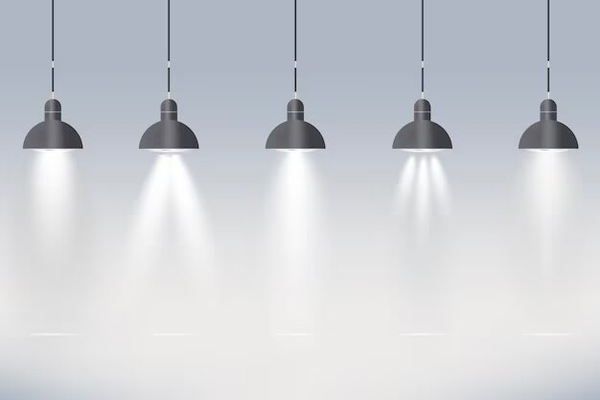
LED is a rapidly developing lighting technology that offers customers many advantages, such as longer life, durability, energy efficiency, etc. However, there are several lesser-known benefits of LEDs that you might not know. Below are ten unique benefits of LED lights that will inspire you to switch your existing artificial lights with them.
1. UV-free light
Traditional incandescent bulbs and compact fluorescent lamps emit ultraviolet radiations, which can harden some products or materials in industries, which means lights must be carefully picked. Some industries that require UV-free lights are microprocessors, manufacturing, etc. Modern LEDs are the best alternative to traditional lights as they do not emit UV light. So, if you are working with UV-sensitive materials or you yourself are sensitive to UV, consider investing in LED lights.
2. Improve colour rendering
LED lights provide a better colour rendering index (CRI) than traditional lights. The colour rendering index determines the ability of artificial light to display the colours of different objects, images or people in a room. A high CRI will make you see the rich colours of an image/object. So, LEDs can be beneficial to install in art galleries, photography studios, etc.
3. Reduce insects attraction
Insects get attracted to UV light, and the blue end of the spectrum and incandescent bulbs generate significant infrared light and a broad spectrum of colours along with heat. LEDs do not emit UV light, so they are better to install in outdoor areas such as gardens where insects cause a lot of nuisances. You can also install outdoor LED warehouse lights to keep insects away from your facility.
4. Low electromagnetic interference
Traditional lighting technologies generate electromagnetic interference during their operations. This is because they use transformers or ballasts which operate at high frequencies. And these high frequencies emit electromagnetic fields that can interfere with surrounding electronic devices. Whereas, Led generates less electromagnetic interference, which makes them suitable for hospitals, research centres and other areas.
5. Flicker-free lighting
Compared to traditional lights, LEDs do not take time to switch on. They provide consistent and stable light because they use direct current instead of alternate current, which provides a continuous flow of electricity that prevents LED from flickering. Also, flickering leads to eyestrain, fatigue and headaches that make studying, working and doing other activities difficult. LEDs can save you and your employees/workers by providing you with a flicker-free light.
6. Reduced Attraction of Wildlife That Is Light-Sensitive
Wildlife, such as sea turtles, insects and certain species of birds, uses light for navigation and reproduction. Artificial lights, such as incandescent lights, can disrupt the natural behaviour of light-sensitive wildlife by emitting light in certain wavelengths. LED can help reduce the impact of artificial light on wildlife by emitting light that is less likely to disrupt them.
7. Low voltage operation
Light-emitting diode emits light even when low voltage is applied to it. This is because they do not need to warm up like other light sources. Low voltage LED lights, such as 12v strip lights, can’t give an electric shock to people and animals, so they are safe to use in areas such as bathrooms, kitchens and outdoors. LED lights that generate high output, such as 28 to 48 volts, are used in car repair shops and warehouse light fixtures.
8. Less leakage of light
Another advantage of LED is its directional control capabilities, which means it can focus light in a particular direction and does not leak or disperse it into unwanted areas. Light-emitting diodes gain this control from their design and construction. LED produces light when the current is passed through a semiconductor chip enclosed in a lens or reflector. The lens/reflector helps focus the light in a single direction and prevents it from leaking into other directions. Therefore, they can be useful in areas where light leakage needs to be minimised, such as outdoor fields.
9. Less cooling costs
LEDs produce significantly less heat as compared to other artificial light sources- which means manufacturers don’t need to invest in bulky cooling systems for indoor operations. Also, as LEDs produce less heat, they make the environment at home and workspace more comfortable and help you save money on air conditioning.
10. Improve safety
LED does not contain any glass components or filaments that can break during installation or transportation. While traditional lights can shatter if dropped from a hand during installation, causing safety risks to people. Also, LEDs are resistant to shocks and vibrations, which means they are less likely to damage during transportation. So they are safer to use in homes, warehouses, manufacturing units and other industries.
The bottom line
At last, LED’s wide array of benefits makes them a preferred choice among homeowners, manufacturers, retailers and company owners. And along with helping us, they are also positively impacting the environment.

